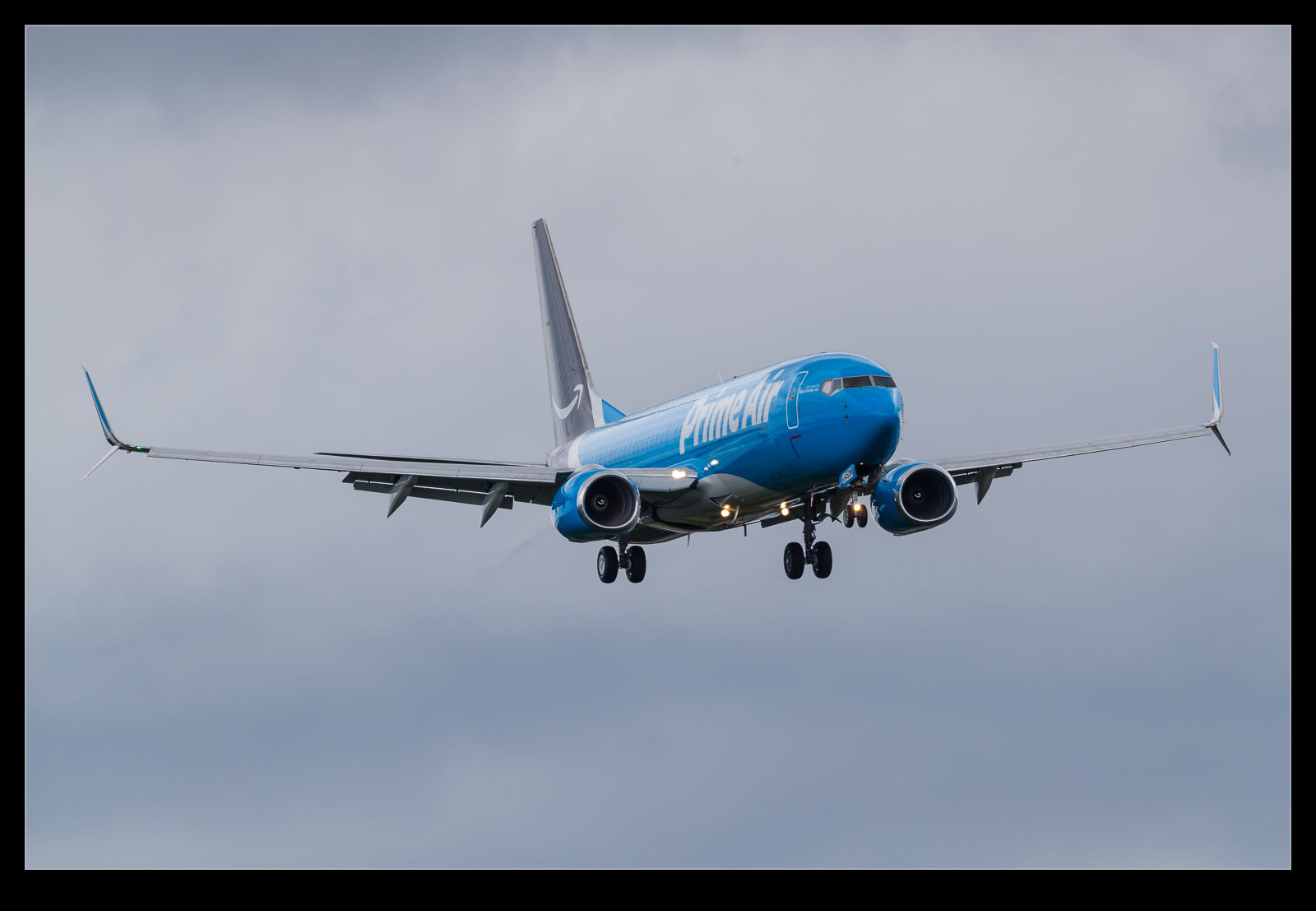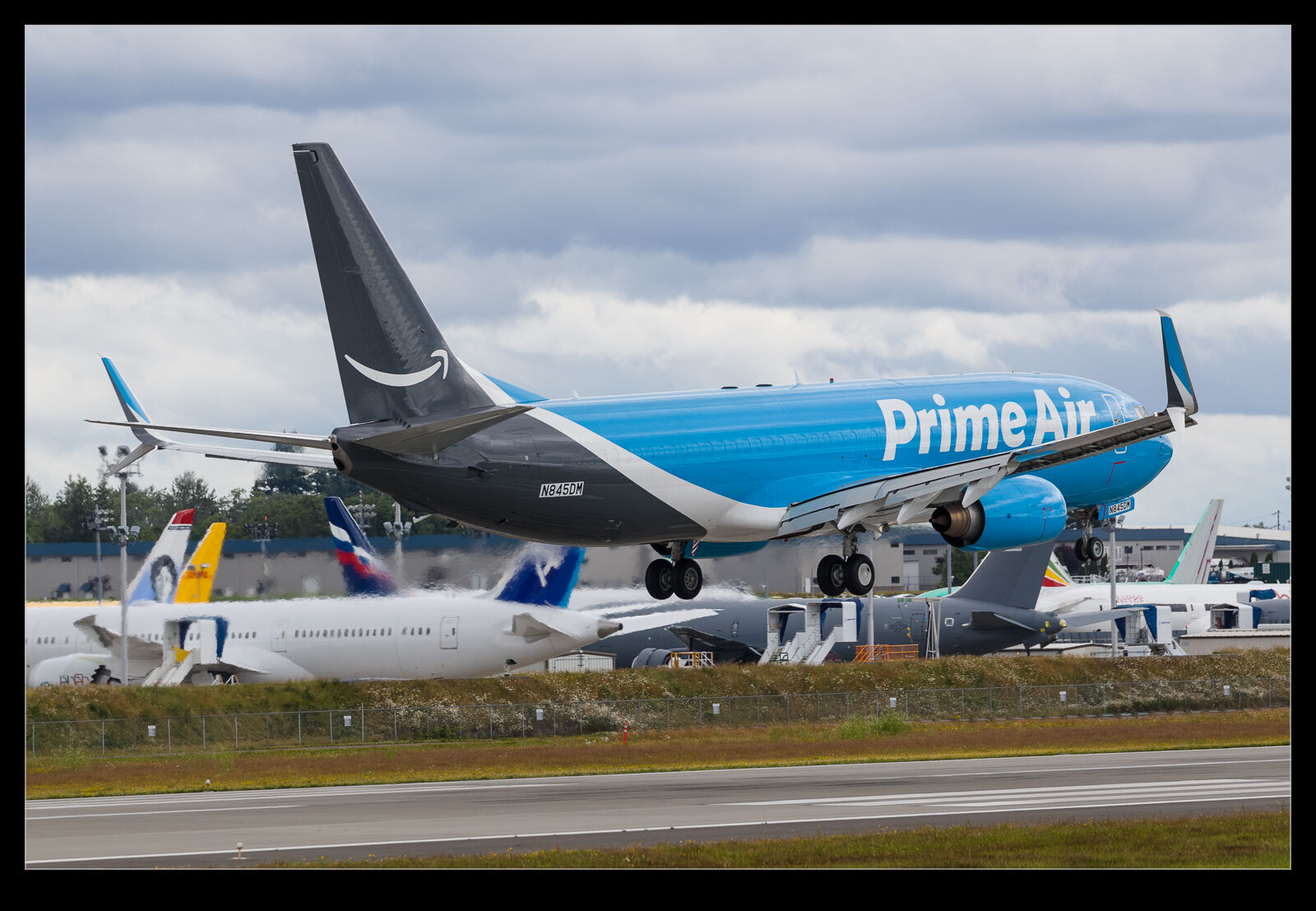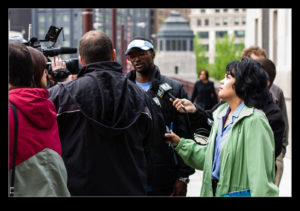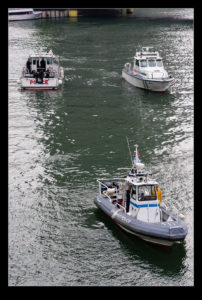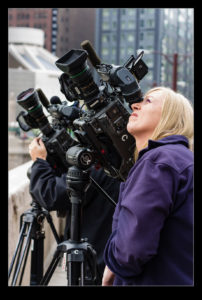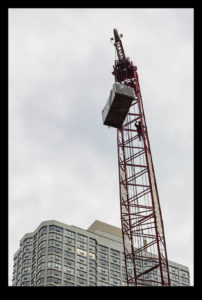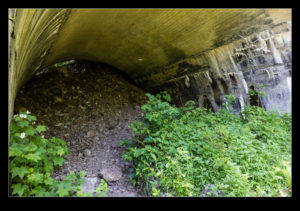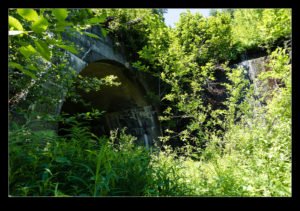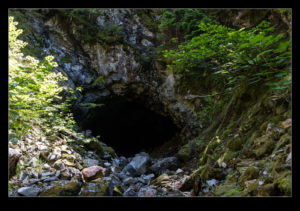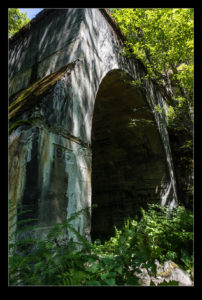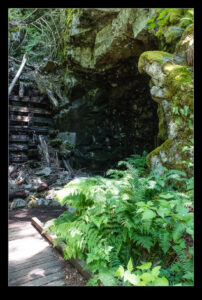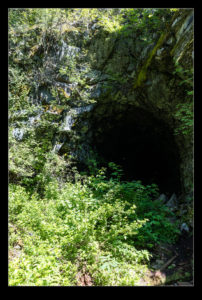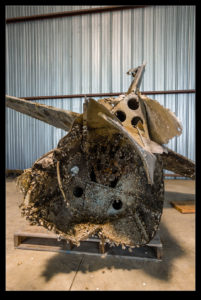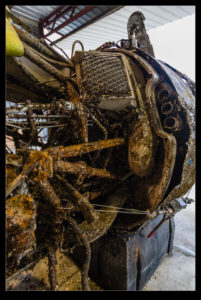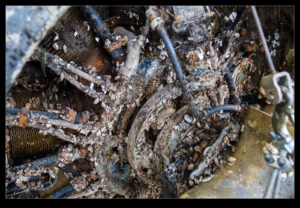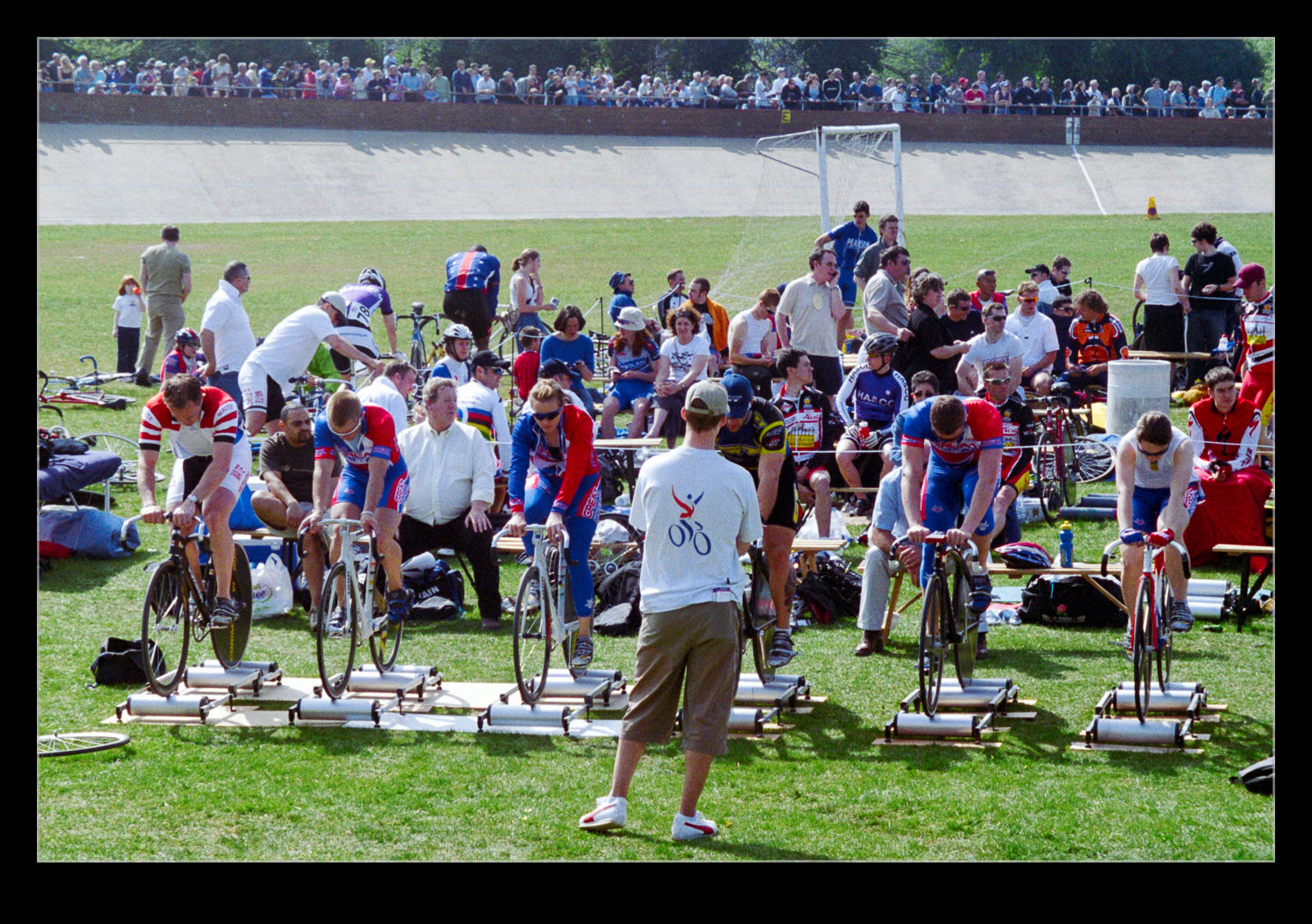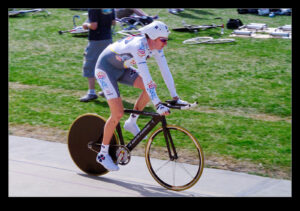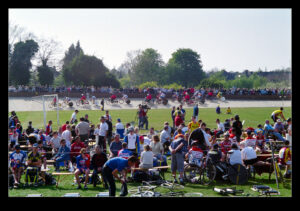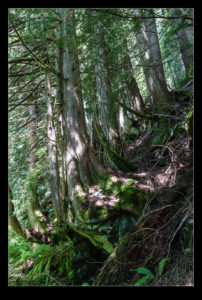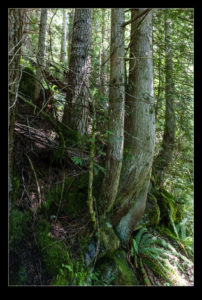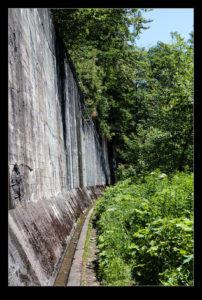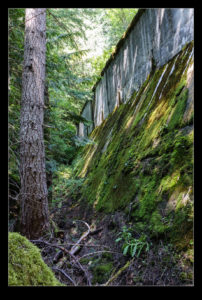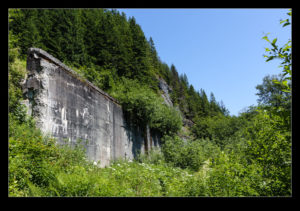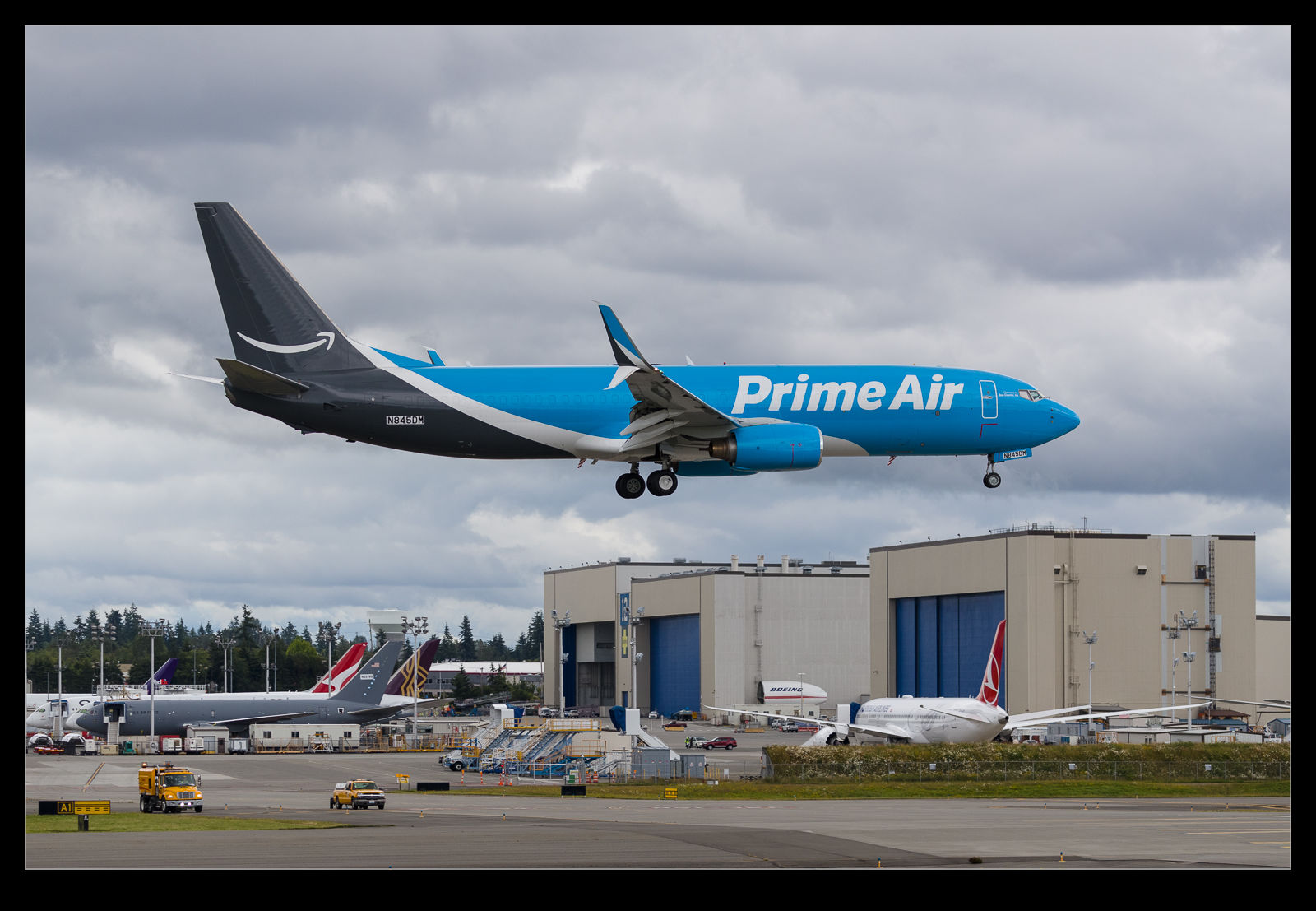 In this recent post, I showed a shot of an Amazon Prime Air 737. With a bit more notice and better timing from an availability point of view, I saw that another jet was coming in to Paine Field from Anchorage. It was being delivered from the conversion line in China and would have the finishing touches taken care of by ATS at Everett. I was there and set up in plenty of time – except… I had one camera ready to go but the other one had been previously used for some video at home and was on manual focus. I was shooting with the 500mm initially and all was well. As the jet got closer, I switched to the 100-400 and everything was wrong. Nothing would focus. It seemed like forever but I must have realized fast and flicked the focus switch because I was able to shoot it as it came level with me and crossed the threshold. What an amateur mistake. Fortunately, I got away with it!
In this recent post, I showed a shot of an Amazon Prime Air 737. With a bit more notice and better timing from an availability point of view, I saw that another jet was coming in to Paine Field from Anchorage. It was being delivered from the conversion line in China and would have the finishing touches taken care of by ATS at Everett. I was there and set up in plenty of time – except… I had one camera ready to go but the other one had been previously used for some video at home and was on manual focus. I was shooting with the 500mm initially and all was well. As the jet got closer, I switched to the 100-400 and everything was wrong. Nothing would focus. It seemed like forever but I must have realized fast and flicked the focus switch because I was able to shoot it as it came level with me and crossed the threshold. What an amateur mistake. Fortunately, I got away with it!
Tag Archives: photo
Circus Around the Potential Jumper
 Continuing the theme of the construction activities that went on around our apartment when we lived in Chicago, there was one day that was a little out of the ordinary. I had been for a walk in the afternoon and was coming back along Wabash when I saw a lot of people hanging around. Then I spotted the TV crews and a bunch of law enforcement.
Continuing the theme of the construction activities that went on around our apartment when we lived in Chicago, there was one day that was a little out of the ordinary. I had been for a walk in the afternoon and was coming back along Wabash when I saw a lot of people hanging around. Then I spotted the TV crews and a bunch of law enforcement.
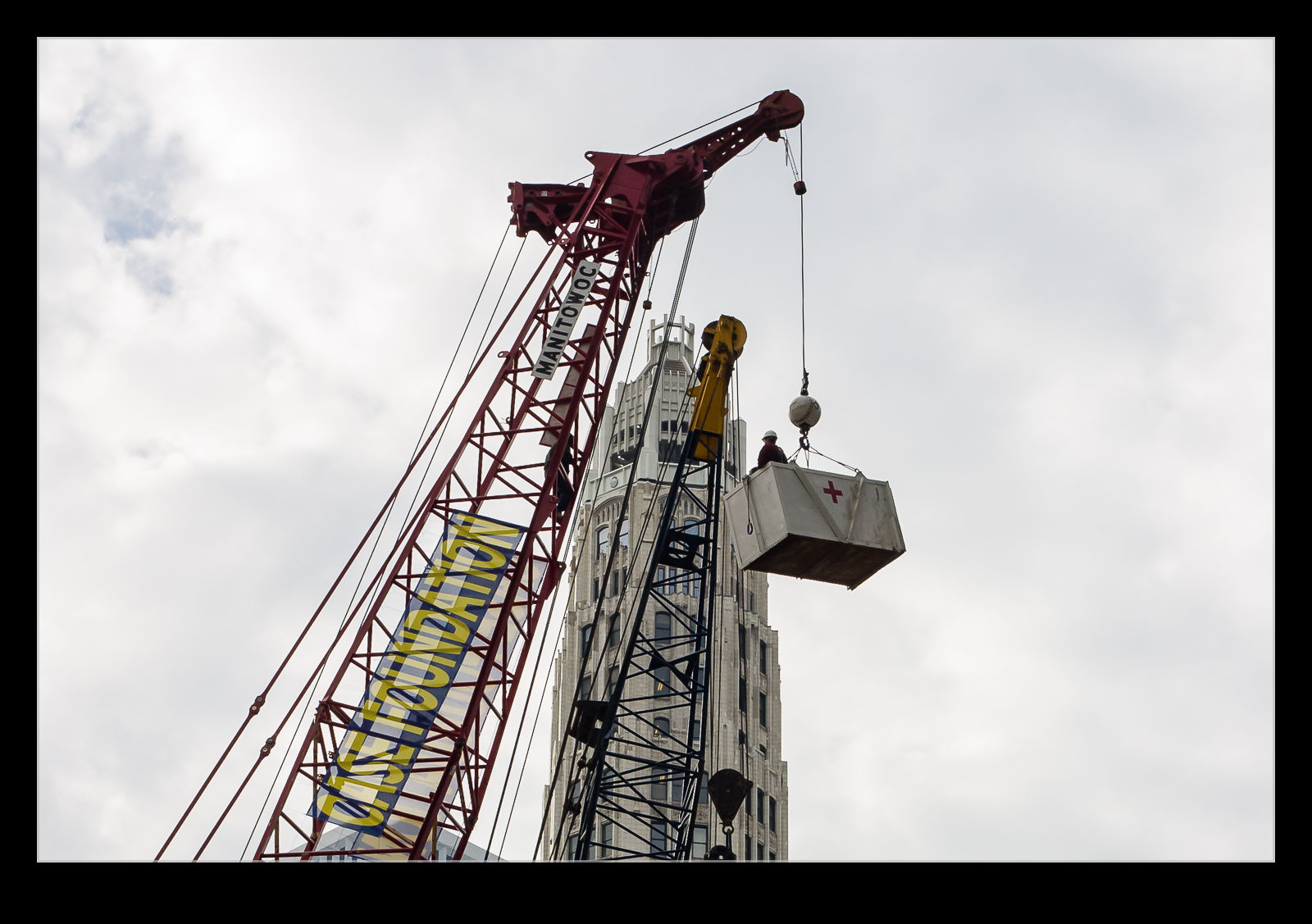 It turned out that someone had climbed one of the cranes and was threatening to jump. Everyone was waiting to see what happened. An inflatable mattress had been installed underneath the crane in case the person did jump but someone was working to talk them down. I had no interest in being around if things didn’t turn out well so, having seen what was going on, I went on my way. I don’t recall it being a big story later so assumed it all got resolved satisfactorily.
It turned out that someone had climbed one of the cranes and was threatening to jump. Everyone was waiting to see what happened. An inflatable mattress had been installed underneath the crane in case the person did jump but someone was working to talk them down. I had no interest in being around if things didn’t turn out well so, having seen what was going on, I went on my way. I don’t recall it being a big story later so assumed it all got resolved satisfactorily.
Ryanair Subsidiary Buzz
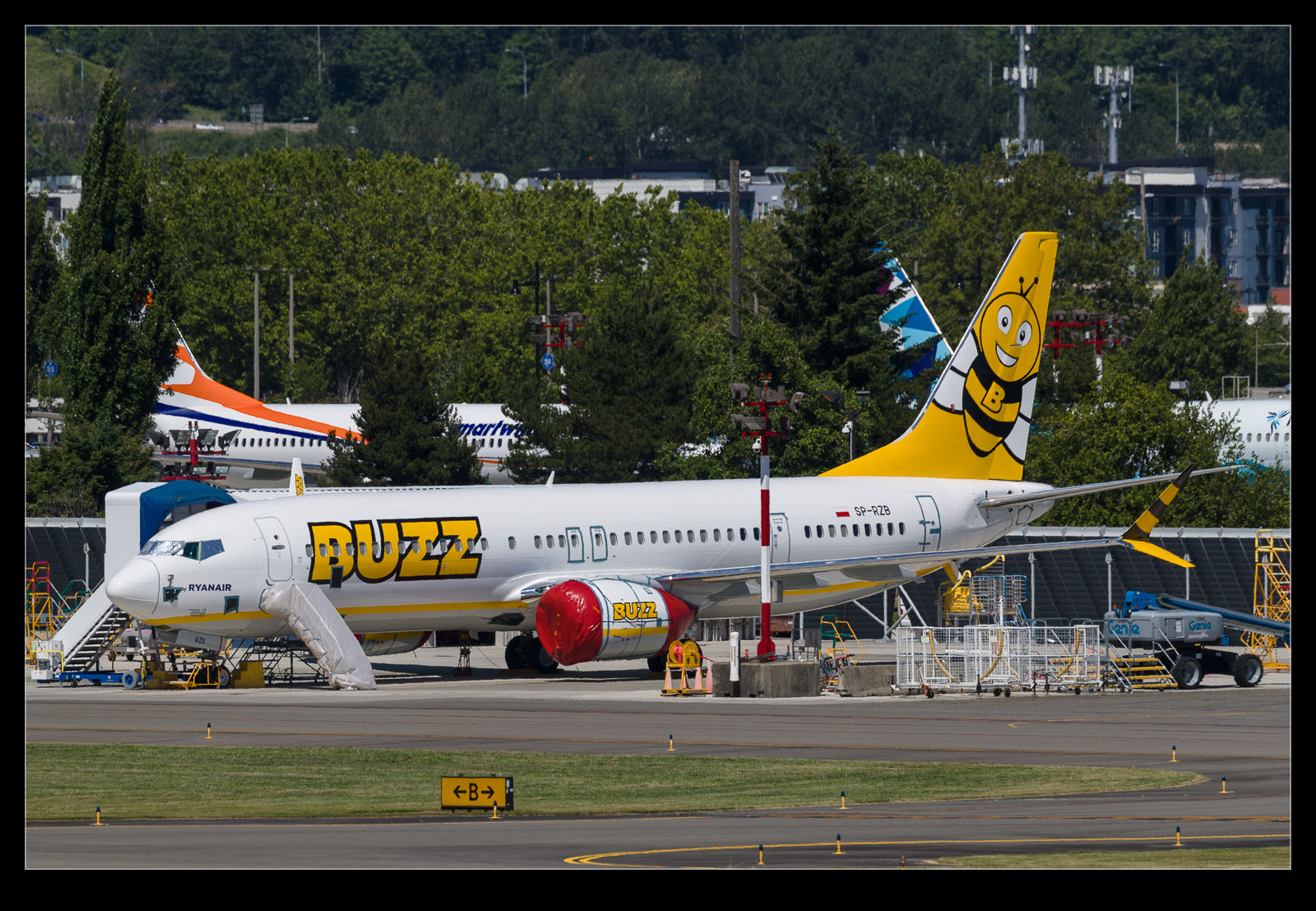 Ryanair has a subsidiary based in Poland that it has been rebranded as Buzz. I must admit I knew nothing about this until, on my way back home from a meeting south of Seattle, I stopped off at Renton to see what was on the flight line. A Ryanair jet was parked up and next to it was a Buzz jet. It still had some taped markings on it but it was basically finished in Buzz colors and registered in Poland. Obviously it won’t be going to them for a little while longer but, once the grounding is lifted, it should be heading to Eastern Europe.
Ryanair has a subsidiary based in Poland that it has been rebranded as Buzz. I must admit I knew nothing about this until, on my way back home from a meeting south of Seattle, I stopped off at Renton to see what was on the flight line. A Ryanair jet was parked up and next to it was a Buzz jet. It still had some taped markings on it but it was basically finished in Buzz colors and registered in Poland. Obviously it won’t be going to them for a little while longer but, once the grounding is lifted, it should be heading to Eastern Europe.
Tunnels on the Great Northern Railway
 More from our hike on the Iron Goat Trail. I described the snow sheds in this post previously. There were some areas of the route that suffered such regular disruption that an alternative solutions was needed. When the track got taken out, trains could get stuck in the mountains, sometimes for days while things got repaired. One of the trestle bridges was washed away in a land slide and, since this wasn’t the first time, the chosen solution was to cut new tunnels.
More from our hike on the Iron Goat Trail. I described the snow sheds in this post previously. There were some areas of the route that suffered such regular disruption that an alternative solutions was needed. When the track got taken out, trains could get stuck in the mountains, sometimes for days while things got repaired. One of the trestle bridges was washed away in a land slide and, since this wasn’t the first time, the chosen solution was to cut new tunnels.
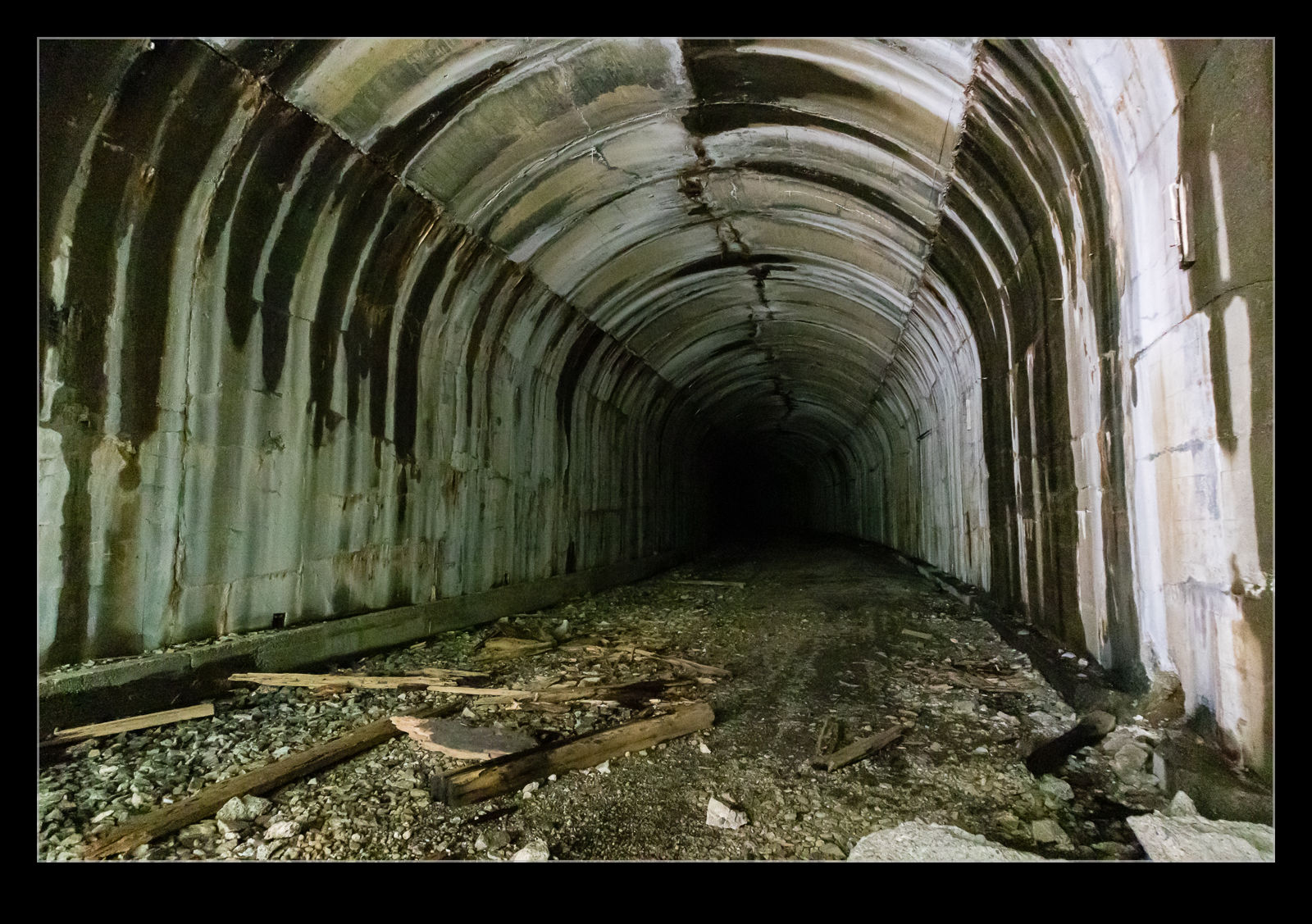 A tunnel was also cut at Windy Point to avoid a tight curve on an exposed promontory. These tunnels are still there. They were cut from the rock by hand. Timber linings were inserted to prevent anything falling on to the track but the timbers are no long gone in most areas. However, you do see a few pieces lying at odd angles in places. There are also some access tunnels that were used for the crews to access the tunnel during construction allowing multiple faces to dig at the same time to speed construction. It must have been tough work up on the mountains in all weathers hacking through the rock to build this.
A tunnel was also cut at Windy Point to avoid a tight curve on an exposed promontory. These tunnels are still there. They were cut from the rock by hand. Timber linings were inserted to prevent anything falling on to the track but the timbers are no long gone in most areas. However, you do see a few pieces lying at odd angles in places. There are also some access tunnels that were used for the crews to access the tunnel during construction allowing multiple faces to dig at the same time to speed construction. It must have been tough work up on the mountains in all weathers hacking through the rock to build this.
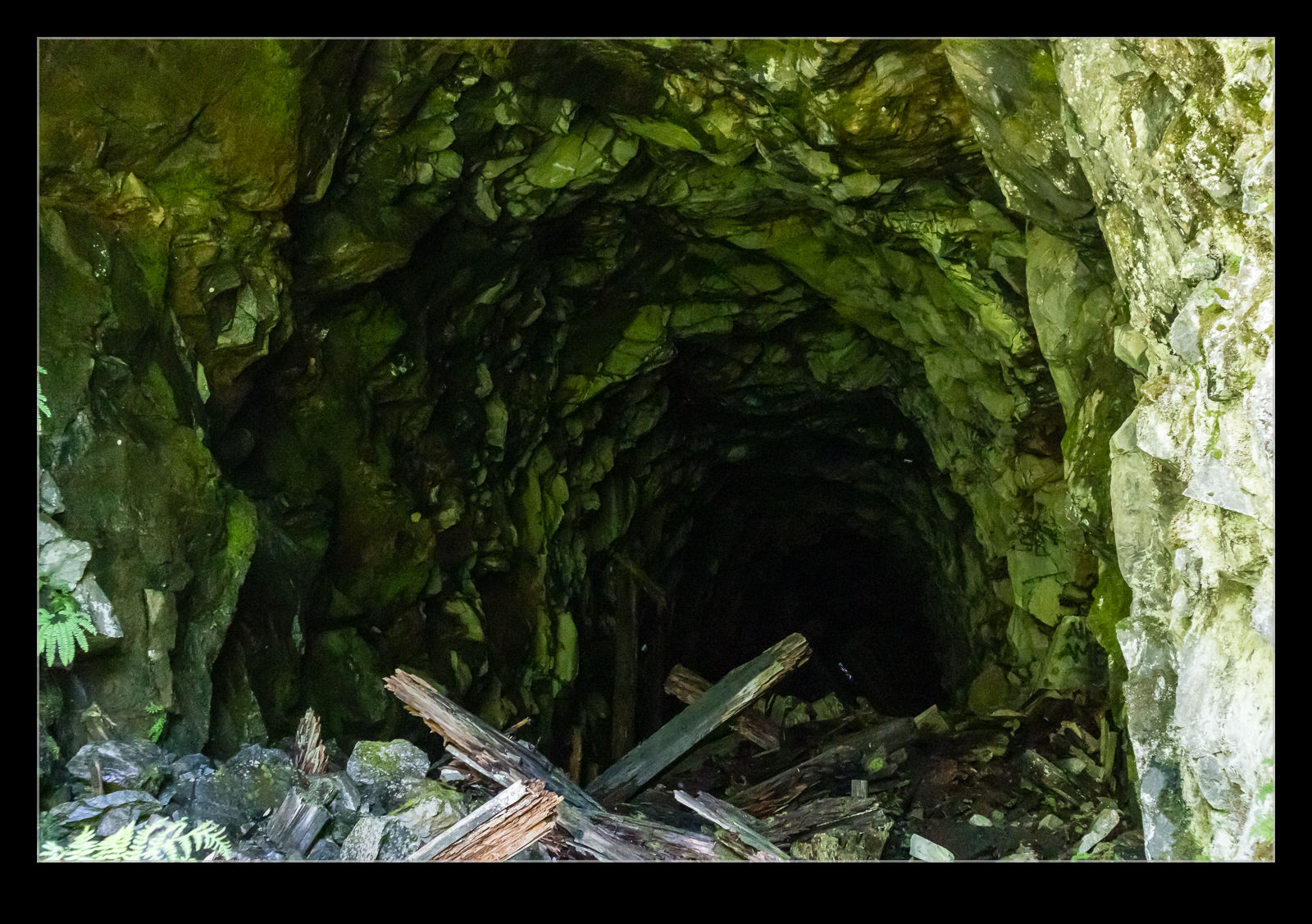 The tunnels are not considered safe to enter these days. Some are blocked by falls. I wasn’t interested in heading in there anyway. I wasn’t equipped for it and the hike was why we were there. However, I did peak in to the entrances of several tunnels to see where they had been cut in to the rock faces. We had made an easy drive to get to this location followed by a simple walk but, when this was all being built, this was the middle of nowhere. The process of picking an alignment and building it all from scratch is most impressive. Ultimately, a new Cascades tunnel was cut and the train no longer needed to take this route. Instead of turning up on to the lower grade, trains now continue up the valley and enter the new tunnel to head east.
The tunnels are not considered safe to enter these days. Some are blocked by falls. I wasn’t interested in heading in there anyway. I wasn’t equipped for it and the hike was why we were there. However, I did peak in to the entrances of several tunnels to see where they had been cut in to the rock faces. We had made an easy drive to get to this location followed by a simple walk but, when this was all being built, this was the middle of nowhere. The process of picking an alignment and building it all from scratch is most impressive. Ultimately, a new Cascades tunnel was cut and the train no longer needed to take this route. Instead of turning up on to the lower grade, trains now continue up the valley and enter the new tunnel to head east.
Wildcat Has Looked Better
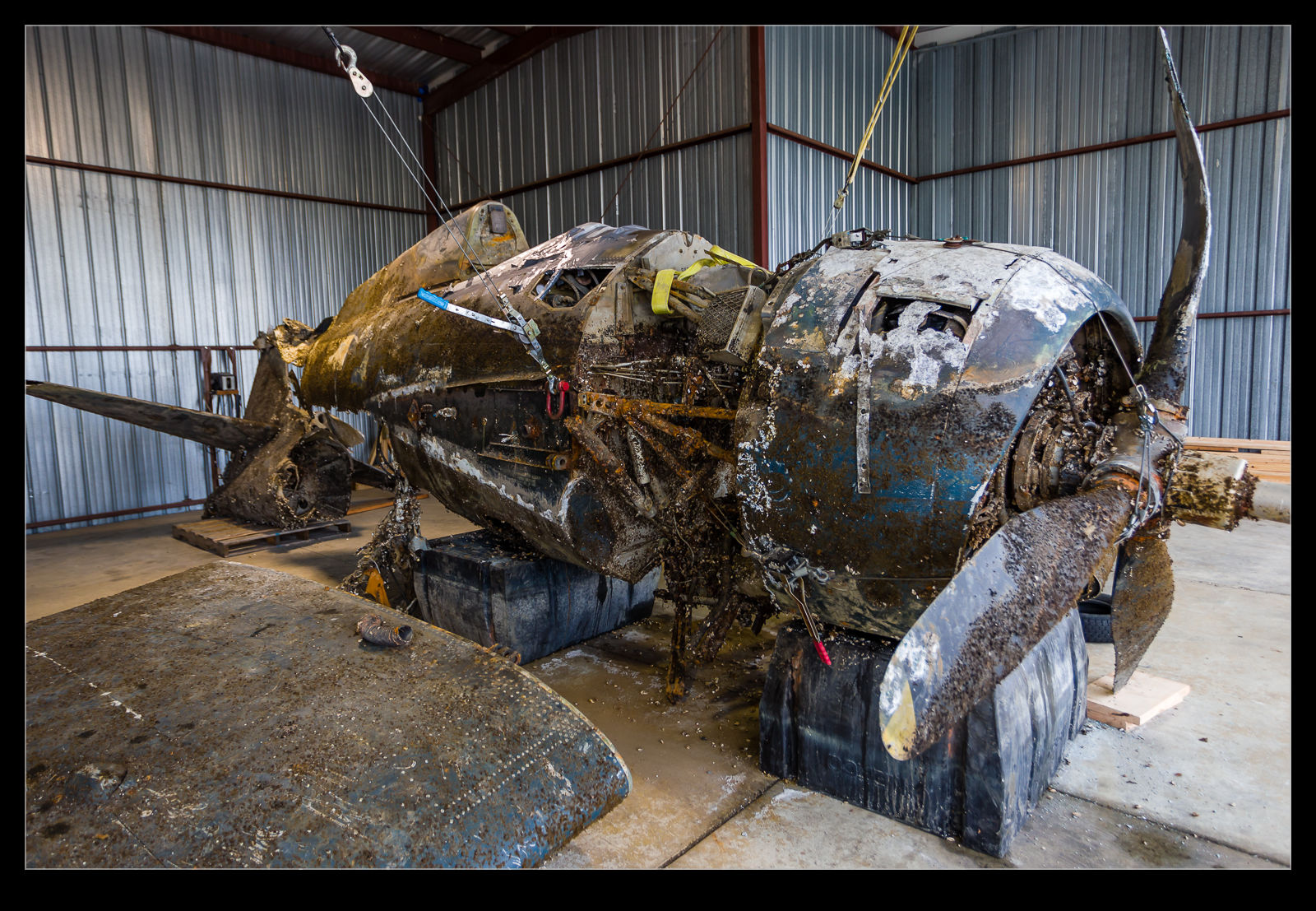 In 2012, A Grumman Wildcat was raised from the bottom of Lake Michigan. The lake has numerous wrecks scattered across it as a result of the training that was undertaken during the Second World War with students ditching their aircraft. Many have been raised over the years with some being restored to flight and others ending up in museums. The one that was raised in 2012 was the subject of a piece I put together for Global Aviation Magazine.
In 2012, A Grumman Wildcat was raised from the bottom of Lake Michigan. The lake has numerous wrecks scattered across it as a result of the training that was undertaken during the Second World War with students ditching their aircraft. Many have been raised over the years with some being restored to flight and others ending up in museums. The one that was raised in 2012 was the subject of a piece I put together for Global Aviation Magazine.
 The airframe was moved to a hangar under the control of Chuck Greenhill (who had financed the recovery) at Kenosha Airport after it was raised from the water and this was where I got to see it. Opening the hangar door was quite a shock because the smell was pretty overpowering. The airframe was covered in various creatures that had attached themselves over the years and they were not doing well in the air of the hangar. It was a tough smell initially. You got used to it a bit and having the hangar door open helped to get some fresh air in there.
The airframe was moved to a hangar under the control of Chuck Greenhill (who had financed the recovery) at Kenosha Airport after it was raised from the water and this was where I got to see it. Opening the hangar door was quite a shock because the smell was pretty overpowering. The airframe was covered in various creatures that had attached themselves over the years and they were not doing well in the air of the hangar. It was a tough smell initially. You got used to it a bit and having the hangar door open helped to get some fresh air in there.
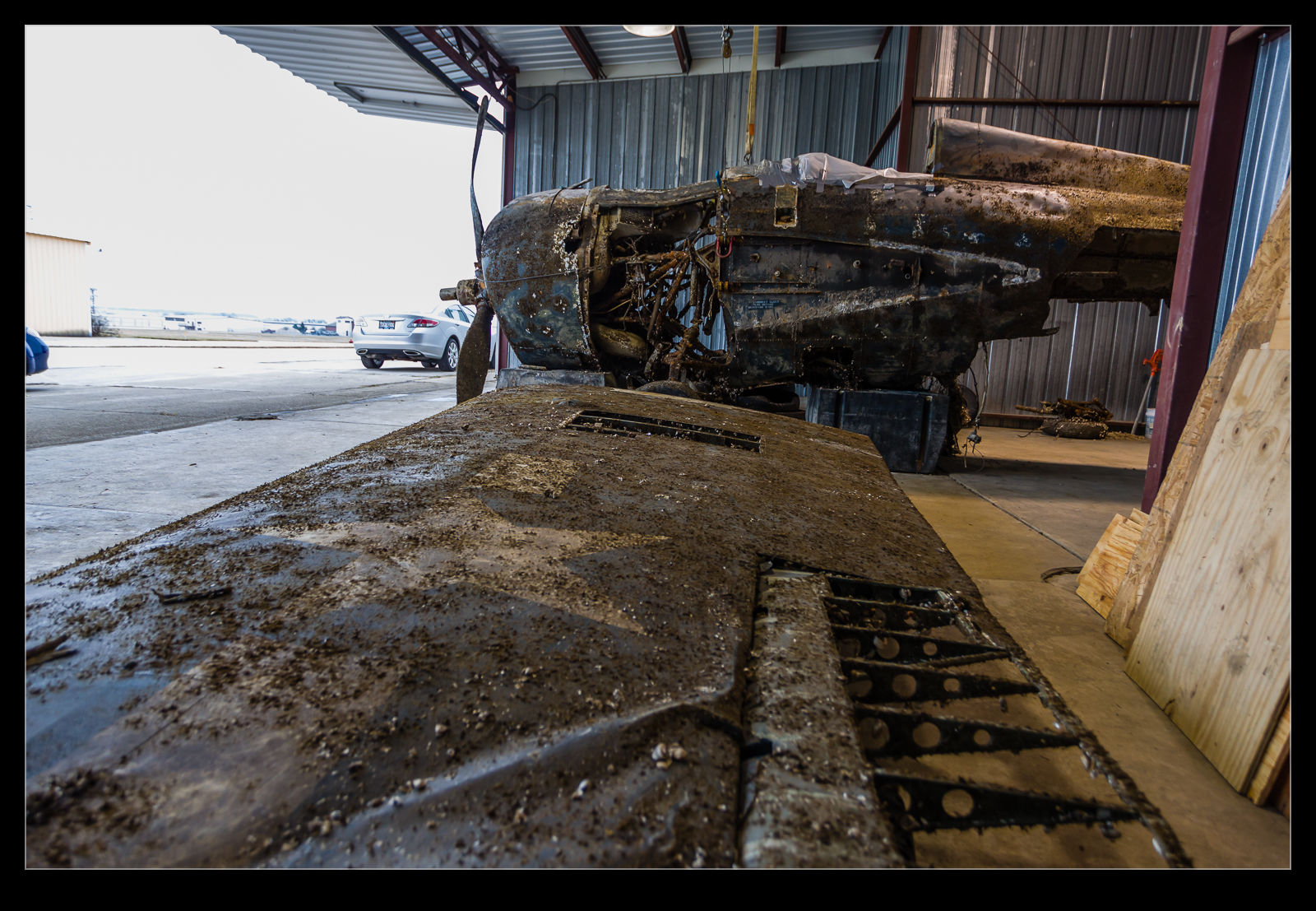 The airframe was in several parts. The wings were laid out in place and the tail section, which had separated at some point during the accident, was laid out behind it all. Obviously, there was lots of damage to the aircraft given that it originally had crashed and then spent decades underwater. The recovery process was delicate to avoid inflicting any further damage.
The airframe was in several parts. The wings were laid out in place and the tail section, which had separated at some point during the accident, was laid out behind it all. Obviously, there was lots of damage to the aircraft given that it originally had crashed and then spent decades underwater. The recovery process was delicate to avoid inflicting any further damage.
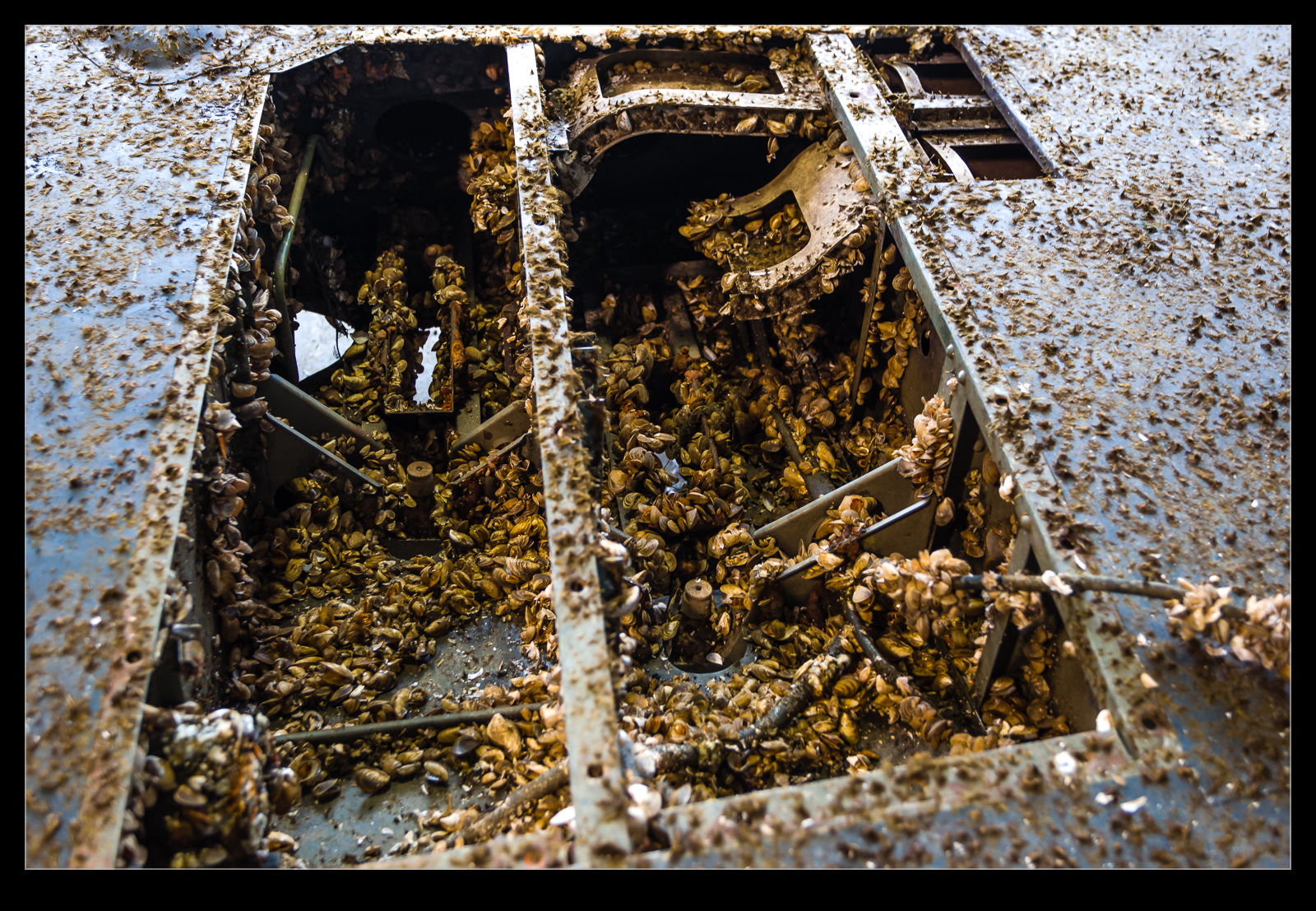 The airframe remains the property of the US Navy. It was originally going to go to Pensacola for restoration but ended up going to the Air Zoo in Kalamazoo MI in the end. It is currently undergoing restoration there.
The airframe remains the property of the US Navy. It was originally going to go to Pensacola for restoration but ended up going to the Air Zoo in Kalamazoo MI in the end. It is currently undergoing restoration there.
Herne Hill Good Friday Meet 2003
 Not long before we left the UK, I finally got around to doing something I had meant to do many times and always forgot about until it was too late. A visit to the Good Friday meet at the velodrome in Herne Hill. Since it was south London, it was a pretty easy place to get to by train so no need to fight the traffic in to Town. It was a big deal in those days – maybe it still is – and it attracted a great selection of riders. Some pros showed up to race or to be seen. David Millar was there being interviewed but didn’t race. I was really pleased to see Stuart O’Grady, I rider I really enjoyed watching race.
Not long before we left the UK, I finally got around to doing something I had meant to do many times and always forgot about until it was too late. A visit to the Good Friday meet at the velodrome in Herne Hill. Since it was south London, it was a pretty easy place to get to by train so no need to fight the traffic in to Town. It was a big deal in those days – maybe it still is – and it attracted a great selection of riders. Some pros showed up to race or to be seen. David Millar was there being interviewed but didn’t race. I was really pleased to see Stuart O’Grady, I rider I really enjoyed watching race.
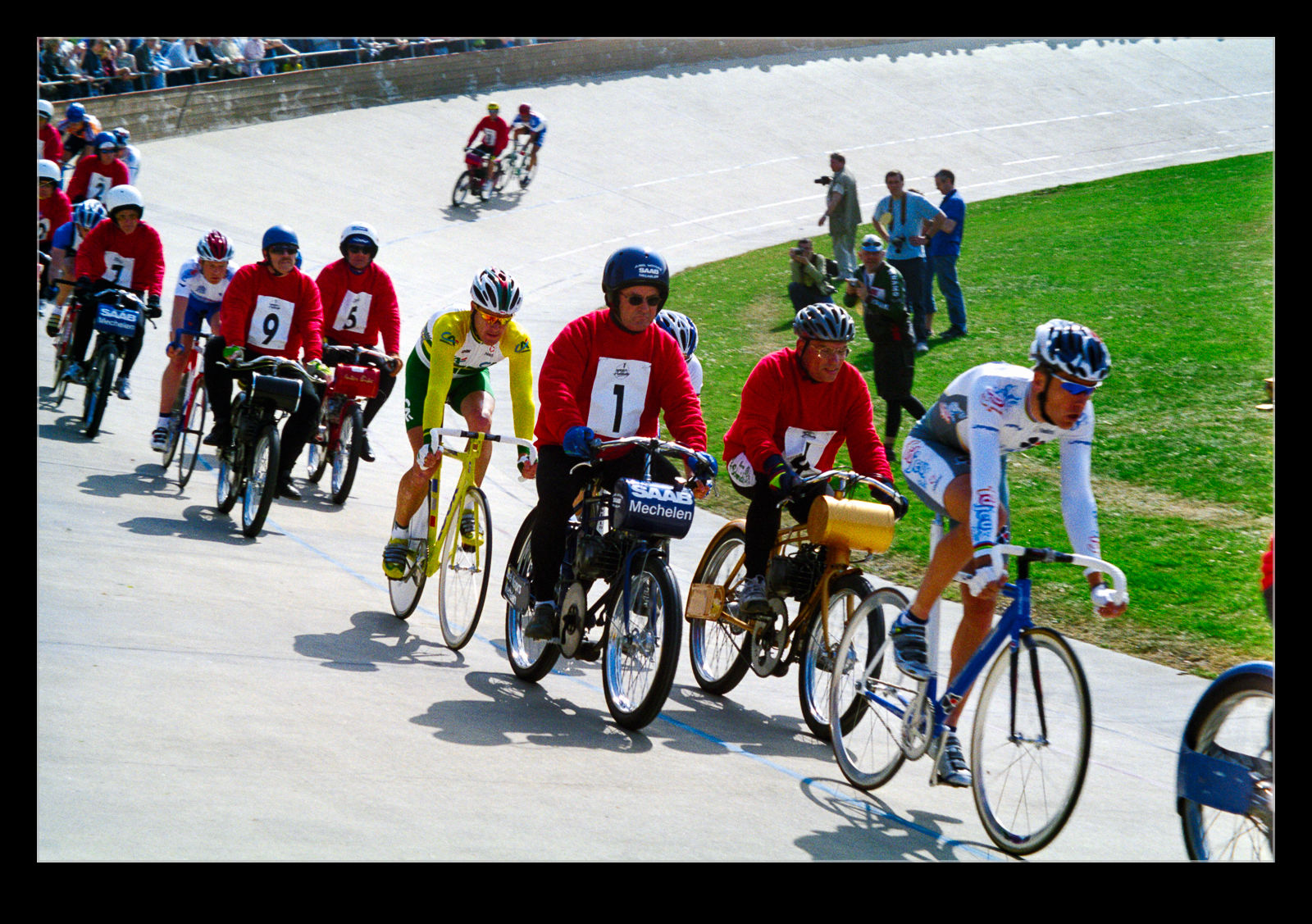 The track scene had a selection of established stars and up and comers that I new about vaguely from reading Cycling Weekly. Chris Newton was a big deal in those days although he never became a widely known cyclist. However, there were two young guys competing that day that I knew were pretty good. I didn’t know they would go on to better things. One was a chubby young sprinter called Chris Hoy. The other was a good pursuiter called Bradley Wiggins. Olympic and Tour de France glory awaited them later in their careers. I was very tempted by one of the t-shirts on sale that day. It said “I’m not fat, I’m a sprinter!”. If you’ve ever seen the physique of some of the fastest sprinters, you would find this funny.
The track scene had a selection of established stars and up and comers that I new about vaguely from reading Cycling Weekly. Chris Newton was a big deal in those days although he never became a widely known cyclist. However, there were two young guys competing that day that I knew were pretty good. I didn’t know they would go on to better things. One was a chubby young sprinter called Chris Hoy. The other was a good pursuiter called Bradley Wiggins. Olympic and Tour de France glory awaited them later in their careers. I was very tempted by one of the t-shirts on sale that day. It said “I’m not fat, I’m a sprinter!”. If you’ve ever seen the physique of some of the fastest sprinters, you would find this funny.
Piper Aztec on Floats
 Tucked inside the fence at Renton was something I don’t think I have seen before. It was a Piper Aztec on amphibious floats. No reason why an Aztec wouldn’t be on floats but it isn’t something I have seen before. I would certainly like to see it on the water at some point. Sadly, because it was tight to the fence, my best option was to use the phone to get the shot!
Tucked inside the fence at Renton was something I don’t think I have seen before. It was a Piper Aztec on amphibious floats. No reason why an Aztec wouldn’t be on floats but it isn’t something I have seen before. I would certainly like to see it on the water at some point. Sadly, because it was tight to the fence, my best option was to use the phone to get the shot!
Trees Growing Out of the Rock
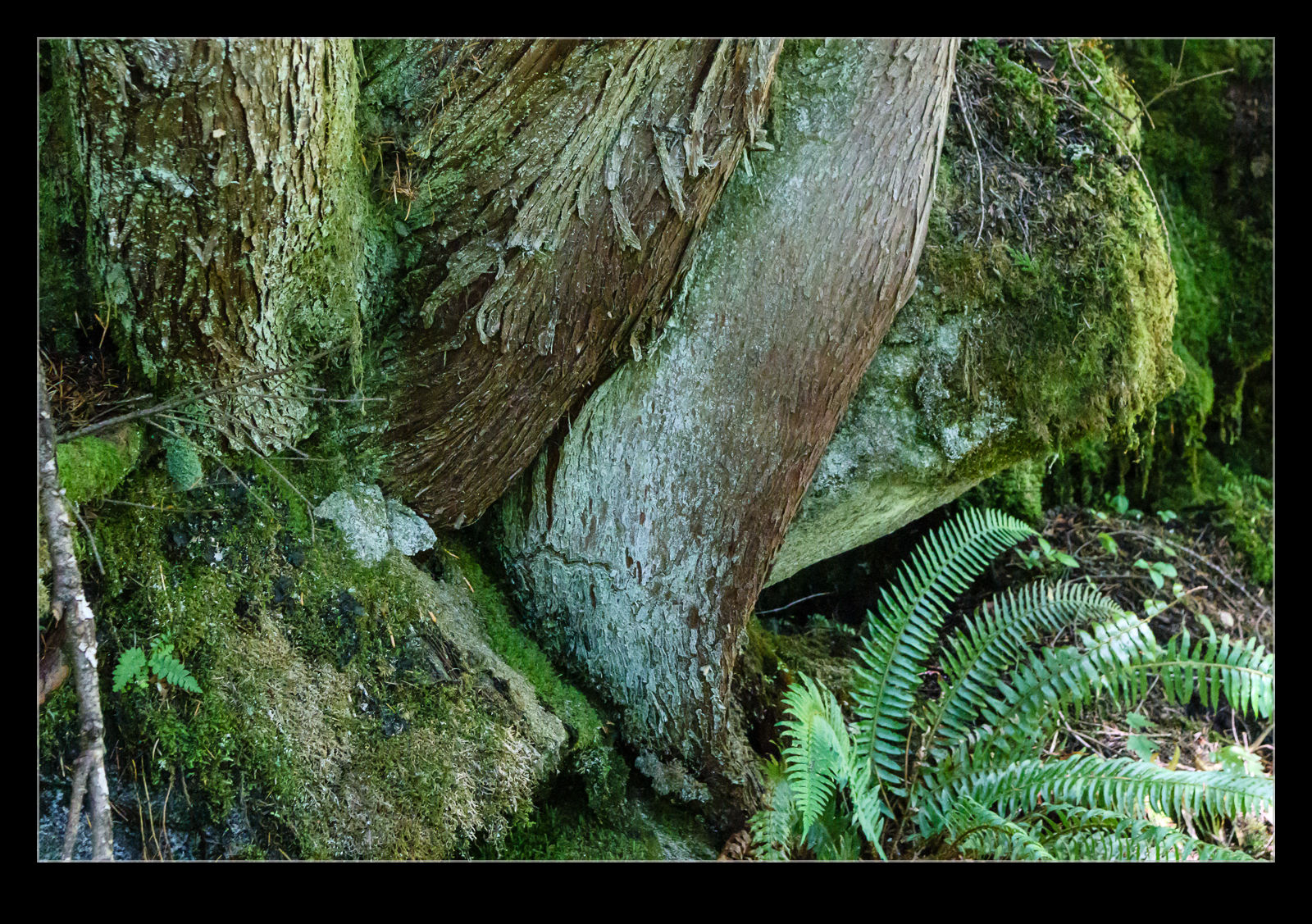 When starting up at rocky mountainsides, it is easy to spot trees that seem to be doing an amazing job of growing out of somewhere that looks like it shouldn’t be possible. Normally I am a lot further away that is practical to get a good look at how they do this. However, while hiking in the Cascades, we came across a spot right next to the trail where some trees were growing right out of the rocks next to us. It was so cool to see how they develop a root structure in solid rock from which they can grow and flourish. Here are a couple of shots to show how they have successfully embedded themselves in a rocky surface.
When starting up at rocky mountainsides, it is easy to spot trees that seem to be doing an amazing job of growing out of somewhere that looks like it shouldn’t be possible. Normally I am a lot further away that is practical to get a good look at how they do this. However, while hiking in the Cascades, we came across a spot right next to the trail where some trees were growing right out of the rocks next to us. It was so cool to see how they develop a root structure in solid rock from which they can grow and flourish. Here are a couple of shots to show how they have successfully embedded themselves in a rocky surface.
Philippines Airlines Spot the Difference

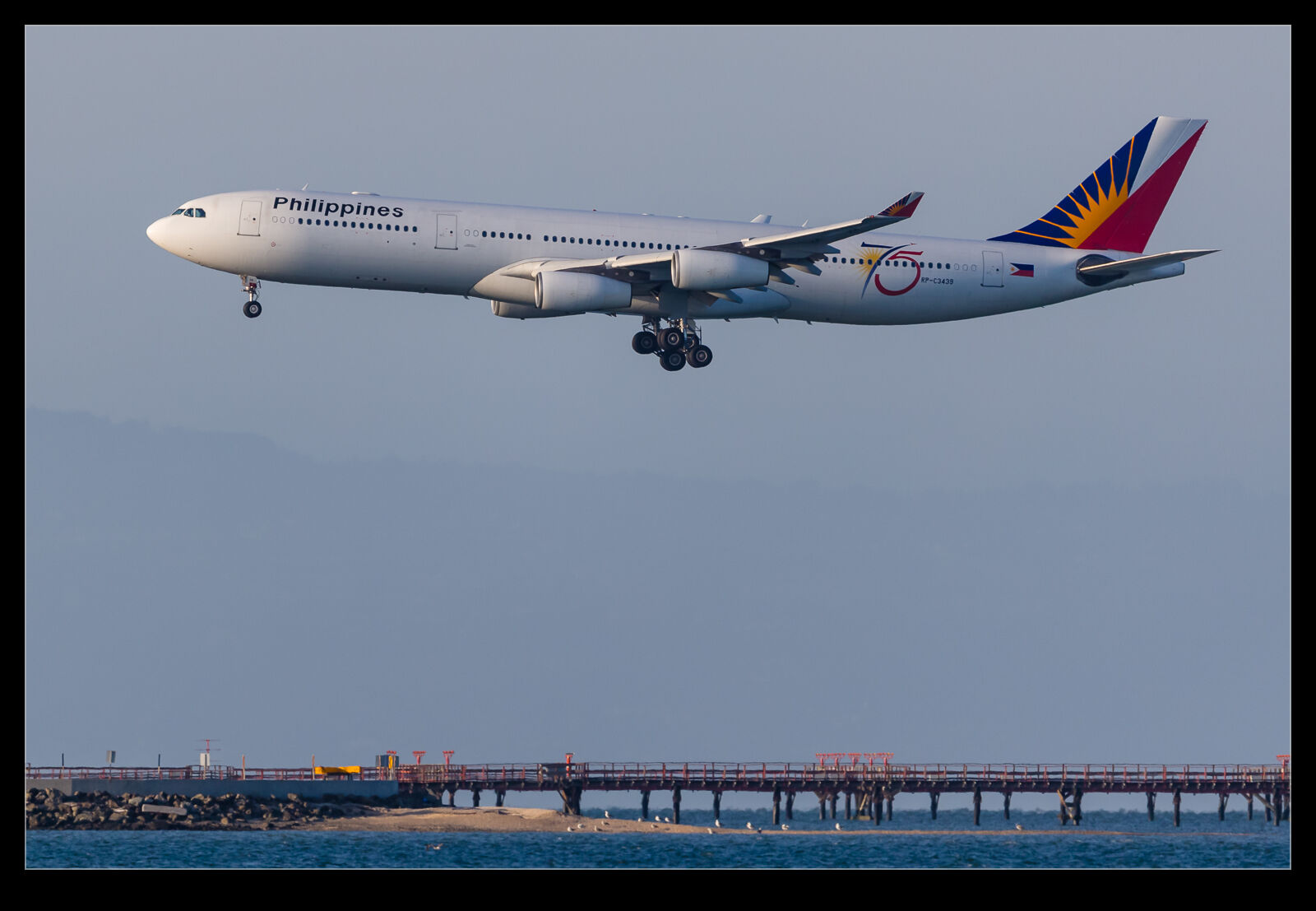 Someone recently was after a picture of a Philippines Airlines Boeing 747. When I looked up my shots of this airline, I came across a picture of one of their A340s landing at SFO. It had an anniversary marking on the fuselage. Just below it in the catalog was a 777-300ER which also had the same marking and was also landing at SFO. The similarity of the aircraft in these shots amused me so here they both are in case something like this is of interest to you too.
Someone recently was after a picture of a Philippines Airlines Boeing 747. When I looked up my shots of this airline, I came across a picture of one of their A340s landing at SFO. It had an anniversary marking on the fuselage. Just below it in the catalog was a 777-300ER which also had the same marking and was also landing at SFO. The similarity of the aircraft in these shots amused me so here they both are in case something like this is of interest to you too.
Snow Shed Remains
 Our hike on the Iron Goat Trail was more than just exercise. It proved to be quite an educational experience. There were many relics of the old railroad and a lot of signs telling the tale of how the railroad was built and why it was abandoned later. The Cascades get a lot of snow and in the early 20th century, the snow depths in winter were a lot more than they are now. It was not uncommon to get 15-20 feet of snow along this part of the alignment in those days.
Our hike on the Iron Goat Trail was more than just exercise. It proved to be quite an educational experience. There were many relics of the old railroad and a lot of signs telling the tale of how the railroad was built and why it was abandoned later. The Cascades get a lot of snow and in the early 20th century, the snow depths in winter were a lot more than they are now. It was not uncommon to get 15-20 feet of snow along this part of the alignment in those days.
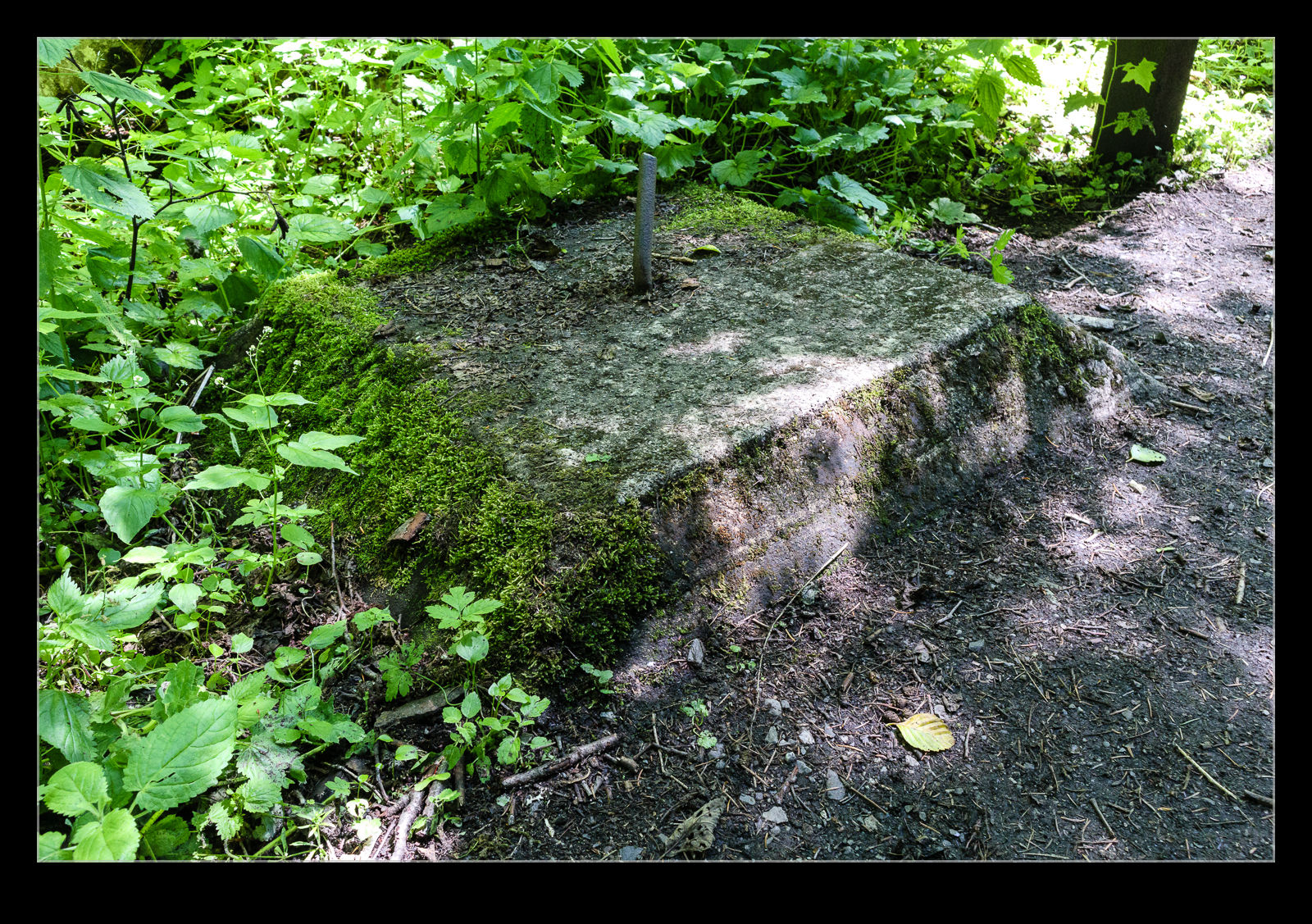 This snow caused trouble with avalanches as a result of the amount of trees that had been cut for timber when building the railway. Landslides were also a problem in other seasons. To protect from the snow, sheds were built over the track at places most vulnerable to avalanche. This practice is continued to this day in the mountainous areas of US railroads.
This snow caused trouble with avalanches as a result of the amount of trees that had been cut for timber when building the railway. Landslides were also a problem in other seasons. To protect from the snow, sheds were built over the track at places most vulnerable to avalanche. This practice is continued to this day in the mountainous areas of US railroads.
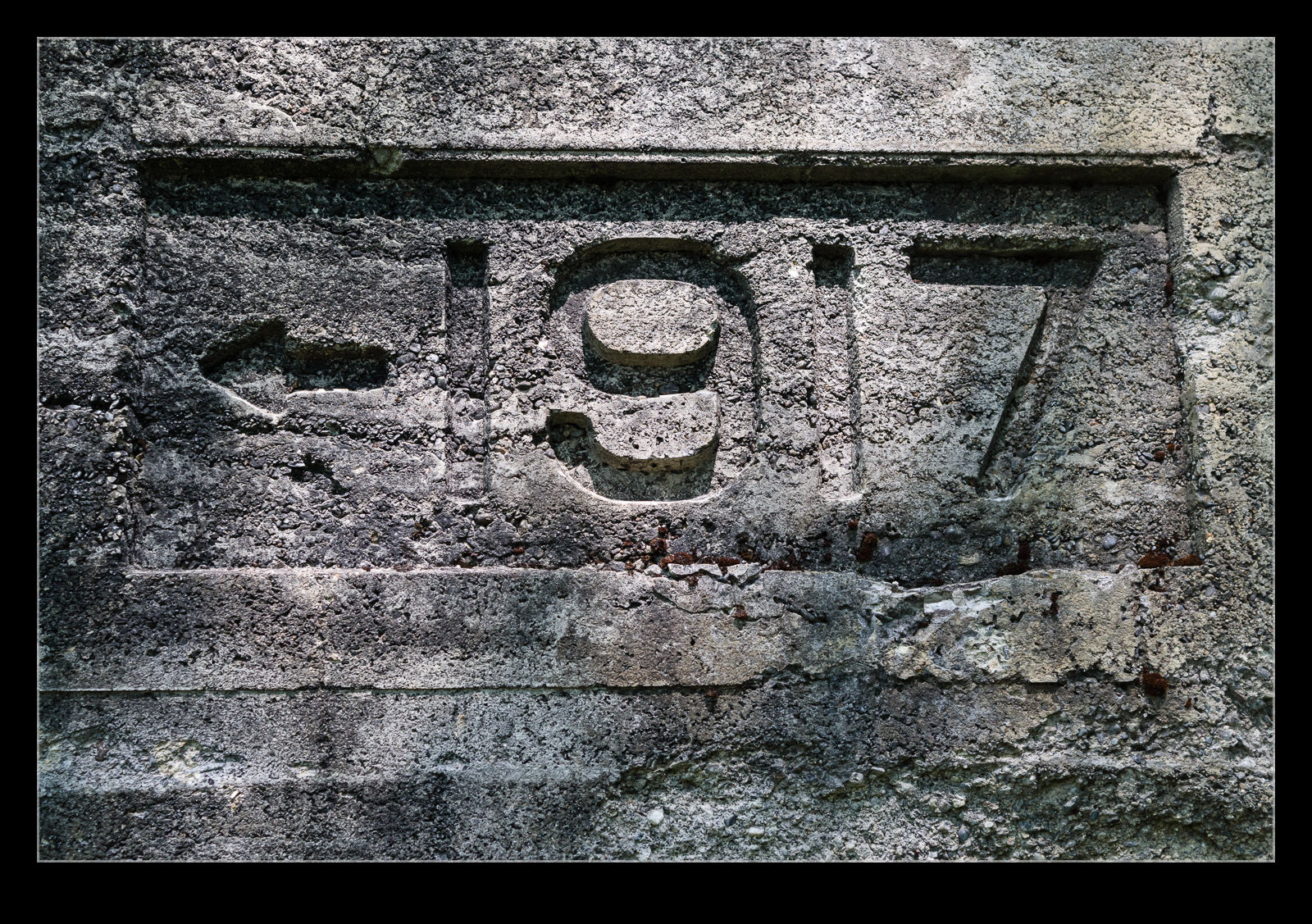 These snow sheds had a reinforced concrete wall on the uphill side. A timber structure was then built out over the track to provide cover with concrete bases for the supporting timbers on the downhill side of the structure. Most of the timbers have either been removed for reuse or have decayed after a century up on the mountainside. The concrete walls are still in reasonable shape. Some spalling of the concrete has occurred but otherwise they look solid. A lot of plant life has grown over them and they do have water cascading over the top in many places. The bases for the timber supports are still visible in many places.
These snow sheds had a reinforced concrete wall on the uphill side. A timber structure was then built out over the track to provide cover with concrete bases for the supporting timbers on the downhill side of the structure. Most of the timbers have either been removed for reuse or have decayed after a century up on the mountainside. The concrete walls are still in reasonable shape. Some spalling of the concrete has occurred but otherwise they look solid. A lot of plant life has grown over them and they do have water cascading over the top in many places. The bases for the timber supports are still visible in many places.
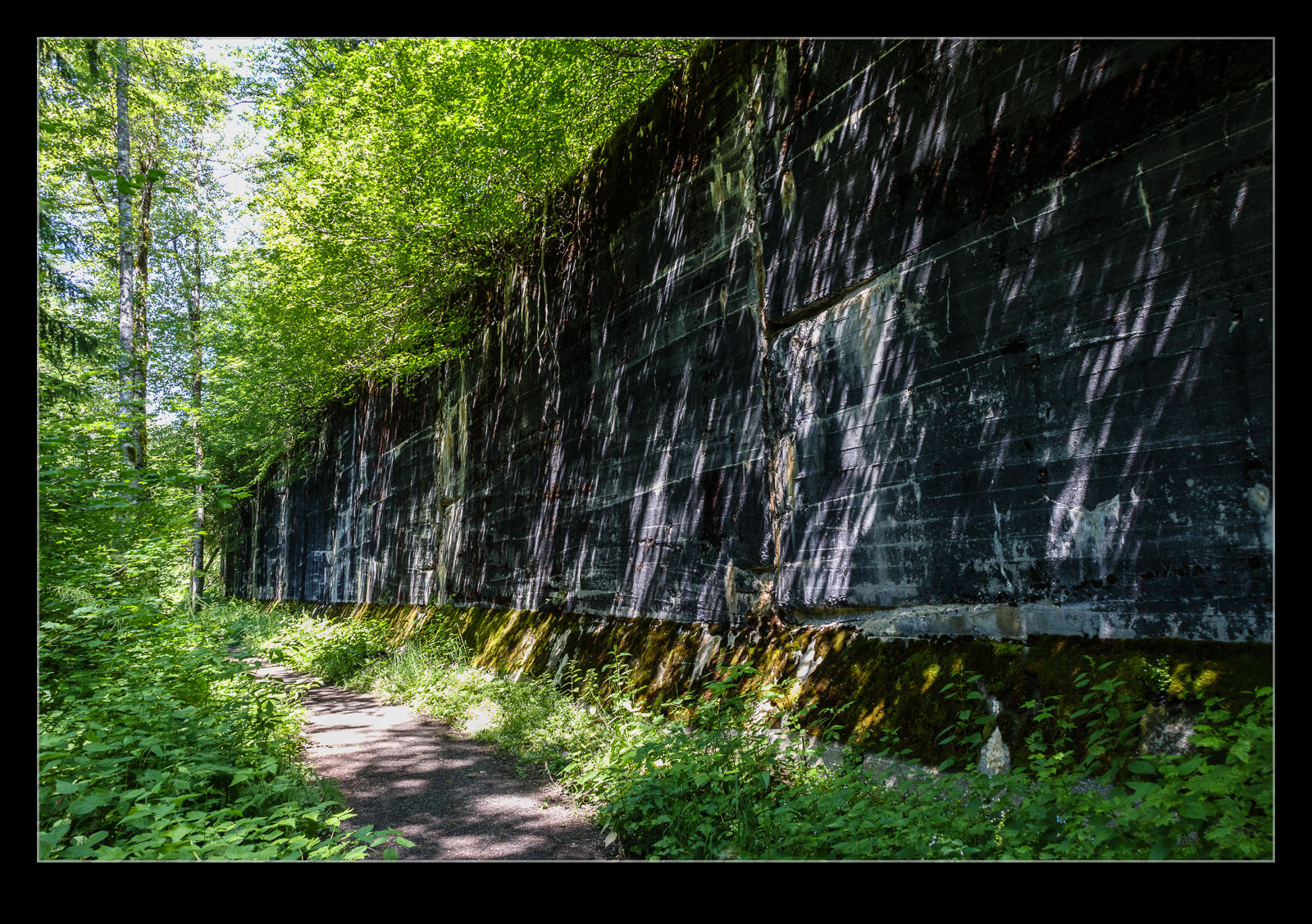 There are many of these sections along the trail. The first one you come across is quite a surprise but, after you have seen a few of them, they start to be normal when you get to another section. They are pretty large structures though.
There are many of these sections along the trail. The first one you come across is quite a surprise but, after you have seen a few of them, they start to be normal when you get to another section. They are pretty large structures though.
